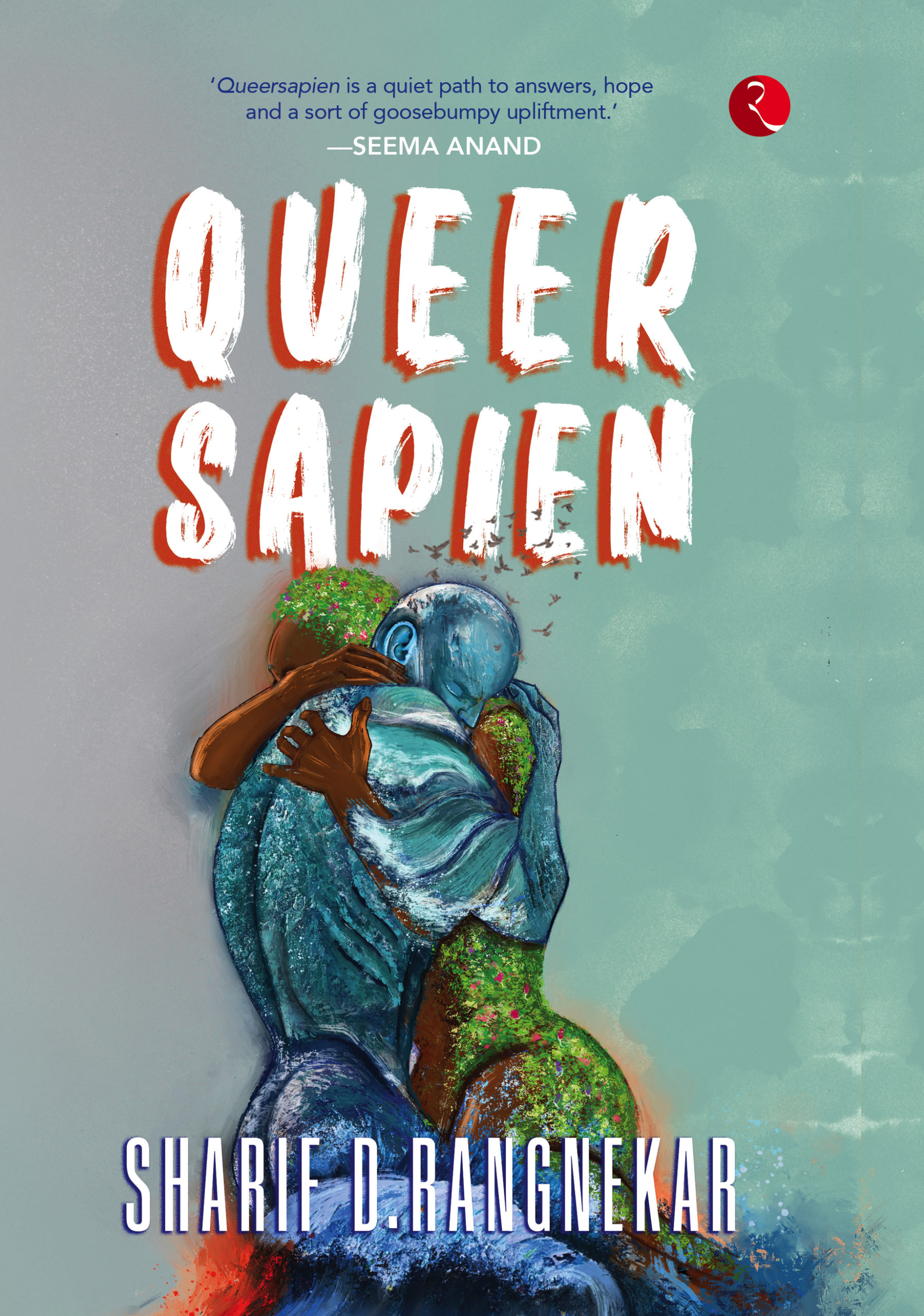Before I begin this review, I must declare a conflict of interest. Consider it a disclaimer, as it were. Sharif Rangnekar, the author of Queersapien, is a friend and, in my opinion, one of the finest human beings I have come across. Any review that I write of his book must, thus, be taken with not a pinch but a fistful of salt.
As I write this book review, it has been two weeks since I finished reading it on a flight from Delhi to Bombay, and I have had the time to sit with, digest and assimilate, and in a few instances, critique the ideas that the book explores.
Published by Rupa Publications and running into 200 and a few odd pages, this is not Rangnekar’s first tryst with writing about queerness. His first book, From Straight to Normal, which explores his life growing up as a gay man in the 1990s, has been crucial to my journey in coming out and fathoming my queerness. Queerspaien is different, yet it is the same in how it is characterized by Sharif’s writing which is raw and replete with emotions. This second book is Rangnekar’s take on queerness and its limits. The first book was about Sharif himself. The second book, which breaks the second wall is a journey of identification and transformation, and explores the effects of neoliberalism, privilege politics and media on his life through his experiences.
A poignant question that the author asks in the book, and which stayed with me, was— ‘Is queer ‘only’ about sexuality? Or is it a state of existence?’ Any reader who has read bell hooks would instantly go back to her idea of queerness. She wrote, “Queer not as being about who you’re having sex with (that can be a dimension of it); but ‘queer’ as being about the self that is at odds with everything around it and that has to invent and create and find a place to speak and to thrive and to live.” Rangnekar’s account of queerness resonates with this. As the book’s blurb says, “Queer is when one tree doesn’t force another tree to become its clone, and every flower finds a place under the sun. Queerness lies in the consciousness that if left free, everyone becomes more rooted in their existence and stronger in their individuality.”
An oft levelled and fair criticism of the queer rights movement is that it is often out of touch with its reality, that it consists of issues that mostly benefit upper caste, upper class individuals’ issues like marriage and Rangnekar travels into these often-difficult questions that one has to pose to oneself when one is in a position of privilege.
The book is raw, it is searing, it is emotive. It has ups, and it has downs. It has data, it has anecdotes, it has academic literature. It has love, and it has politics. It has Sharif’s romance with Thailand, it has his romance with his own self, it has his friendship with Saleem Kidwai and it has his romance with his lovers.
One of the things that has stayed with me is how the book talks about the queer rights movement not just against the world, but the various shades of political spectrum within itself— and why this struggle is different because we are fighting against our own.
This is not merely an introspective piece of writing which is autobiographical, and to dismiss it as just that would be foolish. It joins the hallowed halls of queer literature by queer South Asians and will leave an indelible mark on queer and gender studies, and the body of work that traces queerness in South Asia. Rangnekar weaves in the personal with the political so effortlessly, which makes the book a breezy read. It however stays with one long after one has read it, forces one to think about themselves in the broader context and gives us hope for the future. As a queer person myself, this book has reinvented queerness for me and given it new hues. It is a must read for anyone, gay or straight, cis or trans and tells one that you do indeed, contain multitudes.
- Queersapien: A Breezy Read on Poignant Issues - January 17, 2023


